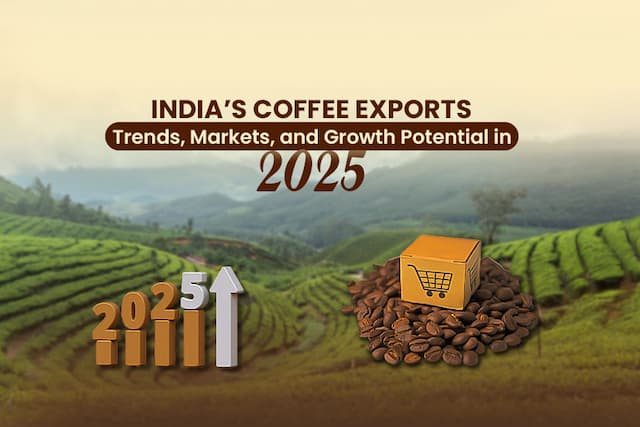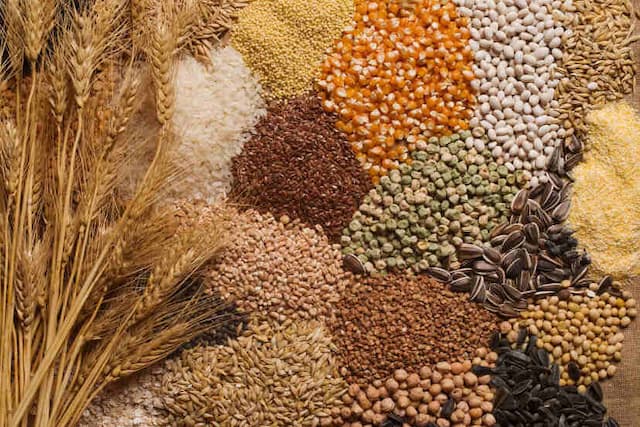India is a major hub for rice production and values it as more than just a staple food. It is a potent economic driver that supports trade, rural employment, and global food security. India is the world’s largest rice exporter, supplying basmati and non-basmati rice to over 150 countries. The increased demands of the world, enhanced logistics, and government policies are forcing the Indian rice export to enter a phase of opportunity in the future.
This blog examines the situation, key markets, and future potential of rice exports from India, and why this has remained a mainstay of the Indian trade economy.
India’s Position in the Global Rice Trade
Before we learn about the trends and challenges, it is important to realize India’s position in the international rice market.
The World’s Leading Rice Exporter
India has been the first exporter of rice throughout the world for the last ten years. During 2023- 24, the country exported approximately 22 million tonnes, which provided nearly 40 per cent of the international rice trade. The value of the export surpassed 10 billion, and rice became one of the potent agri-commodities that gained high earnings in India.
Large-scale production, capitalization in price competitiveness, and a broad range of varieties such as long-grain and non-basmati types of rice are some of the factors that show this dominance.
Major Export Destinations
Key markets of the Indian rice exports are:
- Basmati Rice – Iran, Saudi Arabia, UAE, Iraq, and the UK
- Non-Basmati Rice – Bangladesh, Nepal, Benin, Senegal, and Vietnam
Rice produced in India is also exported via the key seaports in India, such as Kandla, Mundra, and Visakhapatnam, where bulk or containerised cargo is used according to destination.
Key Drivers of India’s Rice Export Growth
There are a number of strategic and structural drivers towards the growth of rice exports in 2025.
Consistent Surplus in Production
To date, India has an estimated output of more than 120 million tonnes of rice yearly, and this is sufficient to meet the national demand and to export. The reliability of monsoons and an extensive system of irrigation also add to this periodic surplus, which gives India an advantage in global supply security.
Competitive Pricing
The Indian rice is the most cost-efficient in the international market. There is government support in terms of Minimum Support Prices (MSP) and its export encouragement, which makes the Indian rice exports competitive with opponents such as Thailand and Vietnam.
Rising Global Demand
High-quality but low-priced rice is in demand in Africa, the Middle East, and parts of Southeast Asia. The factors behind this need are population increase, urbanisation, and the rise of Indian rice in both ethnic and mainstream cooking.
Government Support and Export Policy
Let’s take a look at the policy framework that supports rice exporters in India –
Export Incentives
Some of the schemes on which rice exporters derive benefits include:
- RoDTEP Remission of Duties and Taxes on Export Product
- Transport and Marketing Assistance (TMA)
- Interest Equalization Scheme for exporters who availed of working capital loans
These make exporting cheaper and increase the net realizations for the rice traders and exporters.
Export Restrictions and Regulations
In spite of the fact that India permits the export of rice, it has restricted the exportation during times when the country is faced with a shortage or any inflation. The exporters should know about any changes in customs duty or limits, or bans that may be enforced on the exporters temporarily, to protect the national supply of food.
Opportunities in Value-Added and Niche Segments
Other than dealing with bulk rice, niche segments exist that are more profitable and expanding.
Organic and Specialty Rice
Due to rising awareness of health and sustainability, there is an uptake in organic basmati rice in the high-end markets in the USA, EU, and Japan. Those exporters who acquire the required certifications can get a better price and reach a niche segment of buyers.
Private Label and Retail Packaging
Most foreign retailers buy Indian rice through a private label contract. Branded consumer packs sold out of India, and exports of rice will get improved margins, brand awareness, and duration of the contract of the long-term distribution channel, particularly in North America and Europe.
Key Challenges Faced by Indian Rice Exporters
Exporters still face key challenges despite strong growth –
Climate Variability
The monsoon season highly affects the production of rice in India. Floods or irregular patterns of rainfall have the potential to impact the output and disrupt the supply chain, which can cause price volatility, all of which has a direct impact on export levels.
Trade Barriers and Compliance
The regulations on pesticide residue, heavy metals, and packaging are different in various countries. Rejection or the prohibition of shipments may follow in case of noncompliance. Exporters need to ensure the safety of food at every destination.
Logistic and Freight Issues
Delayed shipments can be caused by port congestion, shortage of containers, and increased ocean freight rates, leading to low profitability. Exporters are required to plan the shipments with skilled logistics partners.
Expanding India’s Role in Global Food Security
India plays a dominant role in the international rice trade, and therefore rice exports in India are of central importance to both the national economy and the stability of world food. As the demand rises, so will the government support increase, and the number of new markets grow. The Indian exporters will gain immense potential to increase their operations in 2025. To remain competitive, however, attention should be focused on quality, compliance, branding, and logistics efficiency.
Credlix is a digital end-to-end trade finance platform that enables Indian rice exporters to access financing, working capital methods, invoice financing, or buyer payment assurance. Our digital platform makes exports faster, smoother, and more predictable.





